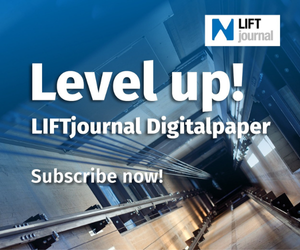Market demands more resilient components
In vandalism-proof lift models, operating and display elements require special attention.
They often have to bear the brunt of the irritation, impatience, haste, high spirits, dissatisfaction, posturing and aggressiveness of the user. The requirements from EN 81-71 Class 2 are often insufficient.
Lift standard EN 81-71
User groups that are particularly dependent on lifts, such as people with restricted mobility, people with small children (prams) or older people in particular face considerable problems in the event of a breakdown.
For example, wheelchair users occasionally have to take the next train in order to be able to get out again just one stop further. Or – another example from day-to-day life - they can only leave the parking garage via the car ramp. If the emergency call button is damaged as a result of vandalism, there is even a risk of people being trapped without it being possible to raise the alarm and get help promptly.
The lift standard EN 81-71 “Protective measures against wanton destruction” deals with measures to equip lifts according to its various requirements and provide sufficient protection against vandalism. Distinctions are drawn here between lift categories 0 to 2 and for each of the installations covered on-site, structural and material designs have been specified for lifts and their components.
Lift category 0
Residential building with a few units, preferably occupied by the owners; office and administration buildings in non-critical areas or with restricted access; normal hotels; shopping centres with glazed lifts.
Lift category 1
Residential building with many units, which are primarily rented and located in normal areas; busy office and administration buildings and no observation of the lift; simple hotels in critical areas; glazed lifts in railway stations and at tram stops in non-critical areas; unobserved lifts in shopping centres in non-critical areas.
Lift category 2
Residential buildings with many units that are for the most part rented and in socially critical areas; all publicly accessible buildings in socially critical areas without observation; buildings for mass events (football stadiums, concert halls, etc.)
Apart from the associated image damage, the failures result in increased operating, maintenance and care costs for the operators. Especially for operators which currently employ Class 2 buttons, the call for tougher components is getting louder. They are confronted daily with the consequences of vandalism and know the potential for cost savings produced by the use of tougher components.
Further developed its existing button series
Schaefer has taken up this challenge and further developed its existing button series in terms of their vandalism resistance. Schaefer has now launched its buttons under the name “Class 3+” for lifts that are very busy and especially exposed to vandalism.
Whereas buttons according to EN 81-71 Class 2 must withstand three blows of 1 kg from a 1 m height, corresponding to an impact energy of 10 Joule, the “Class 3+” buttons were tested with three blows of 5 kg from a 0.4 m drop height, corresponding to an energy of 20 Joule. As a result, the Class 3+ buttons are twice as tough as the previous EN 81-71 Class 2 buttons. In addition, in Class 3+ the protection class was raised to IP 54 (instead of IP X3 in EN 81-71 Class 2).
It was possible to achieve the extended characteristics without impairing the previous ones. To ensure simple replacements of previous components, corresponding Class 3+ versions are available for the B 50 Q/R, B 45 Q/R, VB 42 and VB 42 M versions.
www.ws-schaefer.com






















Write a comment